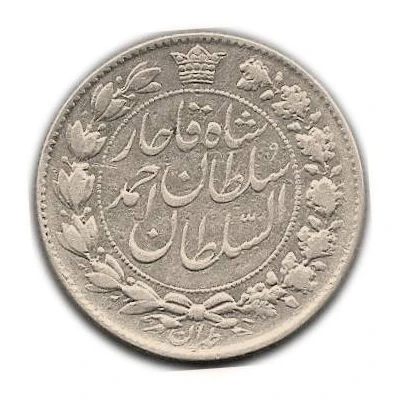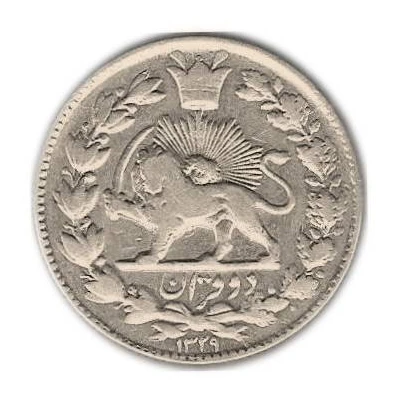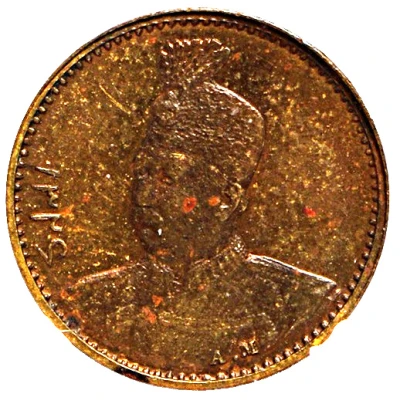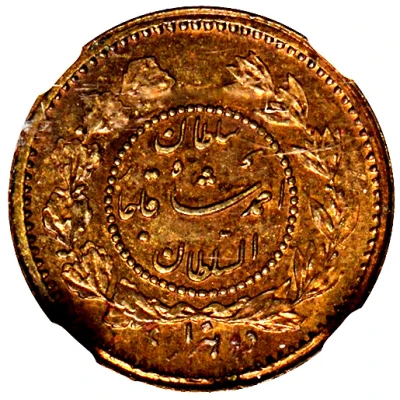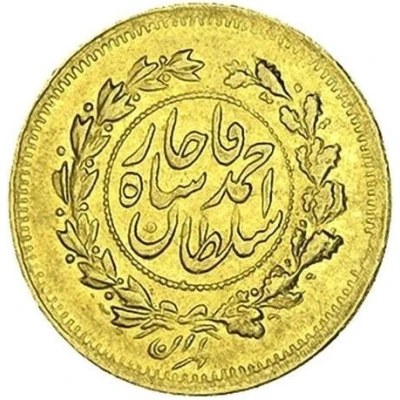
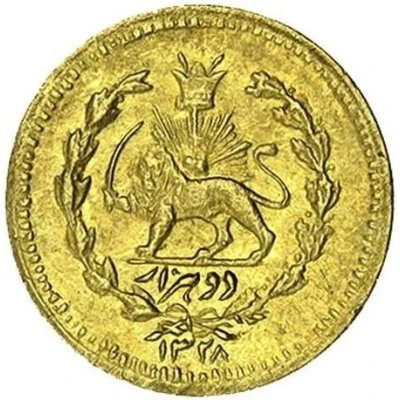

© سامعی (CC BY)
⅕ Tuman - Ahmad Qajar
| Gold (.900) | 0.61 g | 14 mm |
| Issuer | Iran |
|---|---|
| Shah | Ahmad Shah (1909-1925) |
| Type | Standard circulation coin |
| Years | 1328-1330 (1910-1912) |
| Calendar | Islamic (Hijri) |
| Value | ⅕ Toman (تومان) (2) |
| Currency | Qiran (1825-1932) |
| Composition | Gold (.900) |
| Weight | 0.61 g |
| Diameter | 14 mm |
| Shape | Round |
| Technique | Milled |
| Orientation | Coin alignment ↑↓ |
| Demonetized | 1925 |
| Updated | 2024-10-05 |
| Numista | N#63492 |
|---|---|
| Rarity index | 95% |
Reverse
Lettering:
دوهزار
۱۳۲۸
Edge
Reeded
Interesting fact
One interesting fact about the Ahmad Qajar 1328-1330 (1910-1912) gold coin from Iran is that it was minted during a time of great political and economic change in the country. The Qajar dynasty, which ruled Iran from 1789 to 1925, was in power during this time, and Ahmad Qajar was the Shah (king) from 1909 to 1925. The coin was minted as part of a broader effort to modernize Iran's economy and currency, which had been largely based on silver coins until that point. The introduction of gold coins like this one was an attempt to introduce a more stable and valuable currency, and to promote trade and commerce within Iran and with other countries. Despite these efforts, the Qajar dynasty ultimately came to an end in 1925, and the coin remains a valuable collector's item and a piece of Iran's rich history.
